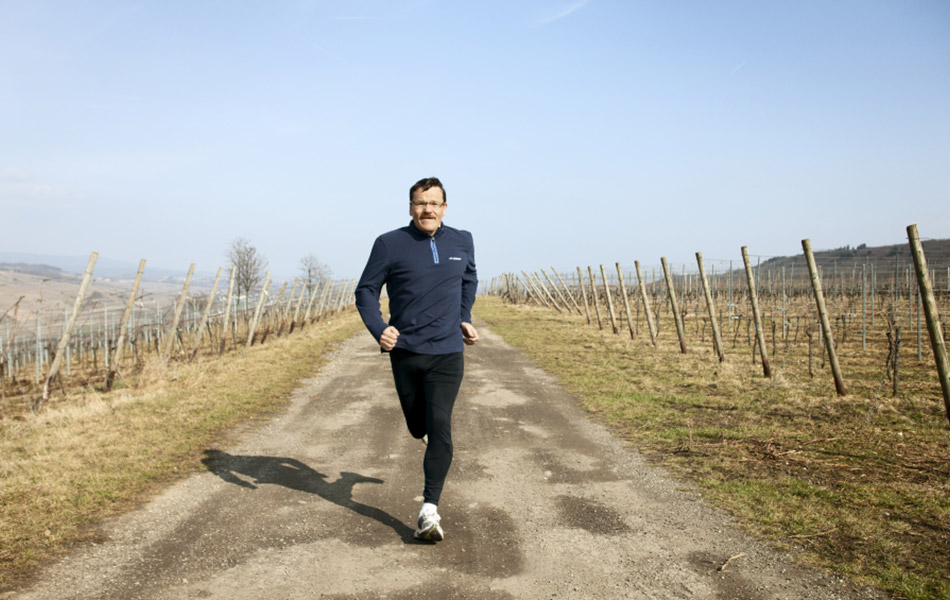
“Time in Range makes it possible to plan ahead. If I’m going out, if I’m doing something that’s active, if I’m making a food choice, if I’m taking my medicine, I have that real-time data that helps me plan accordingly.”
What if there was a way to find out how your diabetes control is going, without waiting for your next HbA1c test? Time in Range (TiR) is an up-and-coming diabetes measure that lets you do just that.
If you use a continuous glucose monitor (CGM), you will know that it allows you to measure your ‘interstitial’ glucose (sugar) throughout the day and night.1 Interstitial glucose sounds complicated but all it means is that the monitor measures the glucose level in the fluid under your skin rather than directly from your blood.2 Time in Range is a measure that could help you manage your blood glucose and your discussions with your healthcare professional about your diabetes management, using the numbers from your CGM.1
Read on and find out more about Time in Range and how this measurement can help you and your healthcare professional improve your diabetes management.1

The Time in Range diabetes measure shows how much time you spend in your target blood glucose range, using the numbers from your CGM.1 You can use other CGM measures alongside TiR as a guide to managing your diabetes, such as how long you spend above (Time Above Range) or below (Time Below Range) your range. Together they show you how much your blood glucose may vary during the day and night.3,4
For most people, blood glucose is ‘in range’ when it is between 3.9–10 mmol/l. Experts recommend that if you have type 1 or type 2 diabetes, most people should spend at least 17 hours (70%) of their day within this target range.1 Check with your healthcare professional what your personal target range is.
What are the recommended targets for Time in Range, Time Above Range, and Time Below Range?
You will be familiar with using HbA1c to manage your diabetes. Time in Range does not replace HbA1c but can provide extra information and greater insight, because it shows you the peaks and dips in your blood glucose levels each day and night.1,3
HbA1c is a helpful way to look at your average blood glucose levels for the previous three months and it helps to predict your risk of diabetes complications.1 But it cannot show you the daily patterns in your glucose levels so you cannot see any highs and lows you might be having.1 In fact, people with the same HbA1c values could have very different blood glucose patterns.5 A quick look at this article will help explain the differences between TiR and HbA1c.
Two people with the same HbA1c levels can have different blood glucose patterns.
24-hour blood glucose of a person with type 1 diabetes
HbA1c result = 7.0%
High blood glucose variability – an episode of hypoglycaemia and a couple of episodes of hyperglycaemia
24-hour blood glucose of a different person with type 1 diabetes
HbA1c result = 7.0%
Low blood glucose variability and no hypo- or hyperglycaemia
By adding Time in Range to your diabetes management, you can get a more complete picture of your blood glucose levels. It can also help you spot any patterns in low blood glucose (hypoglycaemia) and high blood glucose (hyperglycaemia) during the day and night, and between different days. By using Time in Range with HbA1c, you get a personalised story about your blood glucose levels, helping you understand how they fluctuate daily and what might be causing the peaks and dips.1
“Time in Range makes it possible to plan ahead. If I’m going out, if I’m doing something that’s active, if I’m making a food choice, if I’m taking my medicine, I have that real-time data that helps me plan accordingly.”
A video snapshot of Time in Range
Living with diabetes means an increased risk of certain health complications, but the good news is that increasing time spent in your target blood glucose range may help to reduce this risk.6,7
The more you know about your health, the greater your chance of regulating and promoting it. Time in Range can help you to better understand the daily patterns in your blood glucose levels, your blood glucose management and your blood glucose targets.1 A survey of people with diabetes found that Time in Range came second only to food as the most important factor affecting their daily lives.8
Continuous glucose monitoring and Time in Range can also help you have more detailed discussions with your healthcare professional about your diabetes, and better understand the advice you are given. Together you can discuss your eating habits and physical activity as well as your treatment choices, insulin dosage and the timing of your doses to improve your diabetes management.1,8
By using Time in Range alongside HbA1c, you can work with your diabetes care team to make a realistic and effective plan for how to manage your diabetes by spending more time within your target blood glucose range.1
January 2024. IE23DI00215


